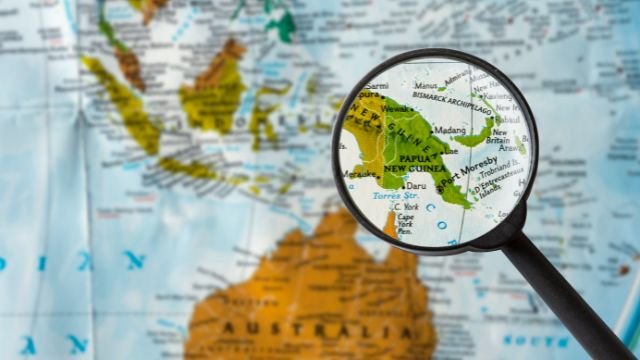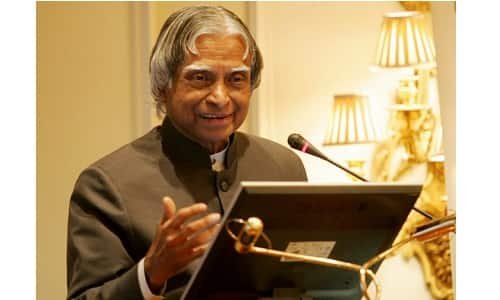Currently, there are over 7,000 languages used in the world. It’s clear from that staggering figure how many distinct languages are spoken in a single nation or area.
When deciding which languages are most useful for travel, tourists should consider which ones are most frequently spoken throughout the world and in the destinations, they’ve always wanted to visit. These are the top 10 languages in the world, according to statistics released on June 16, 2023, by the Statista Research Department.
Countries with Most Languages Spoken
| Rank | Country | Number of Languages Spoken |
| 1 | Papua New Guinea | 800+ |
| 2 | Indonesia | 700+ |
| 3 | Nigeria | 500+ |
| 4 | India | 450+ |
| 5 | Cameroon | 250+ |
| 6 | Democratic Republic of the Congo | 200+ |
| 7 | Mexico | 68+ |
| 8 | South Africa | 11+ |
| 9 | Canada | 10+ |
| 10 | Australia | 250+ |
The Benefits of Being Multilingual
According to analysts at the European Commission, being multilingual might be a huge advantage in the employment market.
Businesses are expanding into foreign markets more frequently in a globalized economy, and employers are increasingly looking for employees who can communicate with clients in their language. Your resume/CV will assist you to stand out from the competition for the job if you list a variety of languages. The experts from the European Commission claim that once you’ve landed the job, it’s also likely that having more language abilities will allow you to demand a better wage.
1. Papua New Guinea
Over 800 different languages are spoken there. Amazing linguistic diversity may be found in Papua New Guinea, where each language is frequently connected to a particular ethnic group or locality. This diversity symbolizes the rich fabric of cultures that make up this country and goes beyond simple linguistic differences. The fact that these languages have been preserved and passed down through the centuries is evidence of the deeply ingrained customs and identities of the different tribes and clans.
Language in Papua New Guinea serves as more than just a tool for communication; it also serves as a vehicle for the transmission of information from one generation to the next and the preservation of traditional practices like storytelling. Tok Pisin, Enga, Hiri Motu, and Kuman stand out among these, frequently overcoming communication barriers between various language groups.
The languages spoken in this country are:
- Tok Pisin
- Hiri Motu
- Enga
- Kuman
- Hundreds of indigenous languages specific to various ethnic groups
2. Indonesia
There are hundreds of different languages spoken there, the most widely spoken being Bahasa Indonesia, Javanese, and Sundanese. The enormous archipelago that comprises thousands of islands, each with its distinct cultural past, is reflected in the linguistic diversity of Indonesia. The diversity of the country may be seen in the customs, traditions, and cuisines as well as the languages that are used.
Communication between persons who speak different languages is made easier by Bahasa Indonesia, the standardized form of the Malay language. This sense of harmony among differences is a source of national pride and demonstrates Indonesia’s dedication to promoting tolerance and cohabitation among different cultures.
The languages spoken in this country are:
- Javanese
- Sundanese
- Bahasa Indonesia (national language)
- Balinese
- Acehnese
- Hundreds of regional languages and dialects
3. Nigeria
a nation that speaks more than 500 languages, including Yoruba, Hausa, and Igbo. Nigeria’s rich cultural heritage and status as the most populated nation in Africa are both reflected in its diverse linguistic population. The multitude of ethnic groups that make up Nigeria are represented by these languages, each with its distinct traditions and customs. The languages of Yoruba, Hausa, and Igbo are also thriving civilizations with a long history.
Nigeria’s decision to recognize several languages as official ones shows that it values diversity and respect for its multi-ethnic culture. In Nigeria, language serves as more than just a means of communication; it also serves as a key to the nation’s rich history.
The languages spoken in this country are:
- Hausa
- Yoruba
- Igbo
- Kanuri
- Fulfulde
- Hundreds of other indigenous languages
4. India
With hundreds of languages and dialects, including Bengali, Hindi, and Tamil, India has an extraordinarily diverse linguistic population. The great geographic and cultural disparities in India are reflected in its language diversity. Every state and region has a unique language or dialect, which is frequently closely related to the history and culture of the area. The most frequently used language, Hindi, acts as a unifying force, enabling communication between speakers of various languages. The linguistic diversity of India, however, goes well beyond Hindi and includes a wide range of tongues, each with its distinctive writing system and literary history. This language diversity highlights India’s multicultural identity and serves as a source of pride and unification.
The languages spoken in this country are:
- Hindi
- Bengali
- Tamil
- Telugu
- Marathi
- Kannada
- Gujarati
- Punjabi
- Urdu
- Assamese
- Malayalam
- Odia
- Hundreds of other languages and dialects
5. Cameroon
In Cameroon, where French and English are official languages, more than 250 other languages are spoken. Because of British and French colonial influences, both English and French are commonly spoken in Cameroon, contributing to the country’s linguistic variety.
Beyond these colonial languages, there are a variety of indigenous languages spoken all around the nation, and this must be understood. Each indigenous language is a unique expression of Cameroon’s diverse cultural heritage, with roots that are intricately entwined with the traditions and history of distinct ethnic groups. The rich fabric of Cameroonian culture is made livelier by this language diversity.
The languages spoken in this country are:
- French (official language)
- English (official language)
- Fulfulde
- Bambara
- Ewondo
- Duala
- Hundreds of indigenous languages
6. Democratic Republic of the Congo
More than 200 languages are spoken in this African nation, including Lingala, Swahili, and Kikongo. The Democratic Republic of the Congo is the second-largest country in Africa, and this is reflected in the variety of its languages. It’s important to keep in mind that this enormous country is home to a very broad spectrum of native languages, even though French is the official language.
These languages are essential to the survival of a large number of communities, each with its unique traditions, folklore, and oral histories. The de facto languages for communication in many places, particularly Lingala and Swahili, show the linguistic complexity of this multicultural nation.
The languages spoken in this country are:
- Lingala
- Swahili
- Kikongo
- Tshiluba
- French (official language)
- Hundreds of indigenous languages
7. Mexico
About 68 indigenous languages are officially recognized, which is a considerable number. Because of the country’s linguistic diversity, Mexico’s indigenous history, which predates the arrival of Spanish conquistadors, is possible. Many indigenous languages are still utilized, sustaining long-gone customs and traditions, although Spanish is widely spoken.
Nahuatl, the language of the Aztecs, and Yucatec Maya, the language of the Maya civilization, are two significant indigenous languages which have persisted across time. These languages are more than just tools for communication; they also house a wealth of cultural information and are a symbol of the Mexican people’s strong ties to the past.
The languages spoken in this country are:
- Spanish (official language)
- Nahuatl
- Yucatec Maya
- Zapotec
- Mixtec
- Otomi
- Mazatec
- Over 60 indigenous languages
8. South Africa
It is notable for its linguistic diversity since Xhosa, Zulu, and Afrikaans are spoken alongside English. South Africa has a multi-ethnic society, which is reflected in the range of languages that are spoken there. These languages reflect the many strands that make up South African culture. Zulu, Xhosa, and Afrikaans are just a few of the languages that have made a significant contribution to the history of the nation. The formal recognition of 11 languages demonstrates South Africa’s commitment to preserving its linguistic heritage and upholding diversity.
The languages spoken in this country are:
- Zulu
- Xhosa
- Afrikaans
- English (official languages)
- Sotho
- Tswana
- Venda
- Tsonga
- Ndebele
- Swazi
- Northern Sotho
9. Canada
Although French and English are the official languages, several indigenous languages are also spoken throughout Canada. The variety of languages spoken in Canada reflects both its multiculturalism and indigenous roots. The official languages of the nation are English and French, demonstrating its linguistic diversity. Ojibwe, Cree, and Inuktitut are only a few examples of Canada’s Indigenous languages, which make up the majority of its linguistic diversity. The Indigenous people of Canada take great cultural pleasure in their use of these languages, which are essential to their identity.
The languages spoken in this country are:
- English (official language)
- French (official language)
- Cree
- Ojibwe
- Inuktitut
- Dene
- Numerous Indigenous languages
10. Australia
There are more than 250 Indigenous Australian languages in addition to English. Australia’s Indigenous ancestry is the main contributor to its linguistic variety. Even though English is the most widely used language, several Indigenous languages are still used, protecting cultural traditions and ties to the land. These languages play a vital role in the spiritual and cultural identity of Australia’s Indigenous tribes; they are more than just an instrument of communication.
The languages spoken in this country are:
- English (official language)
- Kriol
- Warlpiri
- Yolŋu Matha
- Pintupi-Luritja
- Many other Indigenous Australian languages (over 250 in total)
Conclusion
Please be aware that the numbers given are approximations and that the number of languages spoken in these nations may vary. Additionally, due to a variety of social, cultural, and historical reasons, language dynamics can alter over time. If you want the most current and reliable information about linguistic variety, always check the most recent sources.

Rahul Kumar is a passionate educator, writer, and subject matter expert in the field of education and professional development. As an author on CoursesXpert, Rahul Kumar’s articles cover a wide range of topics, from various courses, educational and career guidance.




